Performing Images, Embodying Race: The Orientalized Body in Early 20th-Century U.S. Performance & Visual Culture
Wednesday October 15, 2003 - Friday December 12, 2003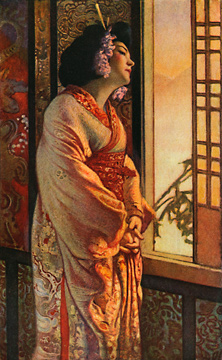
Blanche Bates as "Madame Butterfly" in the Play by John Luther Long and David Belasco, lithograph after Sigismond de Ivanowski from The Century magazine, March 1907
Performing Images, Embodying Race presented a critical view of dominant U.S. images of real and imagined Asian performance, showing how early 20th-century representations of China, Japan, and Asian America supported pervasive beliefs about race, gender, and the "oriental" body.
In historical contexts of anti-Asian racism, exoticist consumer tastes, and debate over women's social roles, many European Americans saw certain Asian, Asian American, and white orientalist performers as embodying authentic or mimetic racial difference.
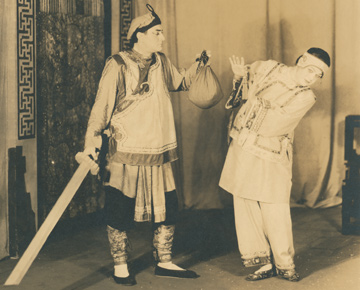 |
|
Scene from The Yellow Jacket, ca. 1913-17 |
Often this involved notions of a "yellow peril" made safely entertaining or aestheticized visions of distant cherry blossoms, kimono, and fans.
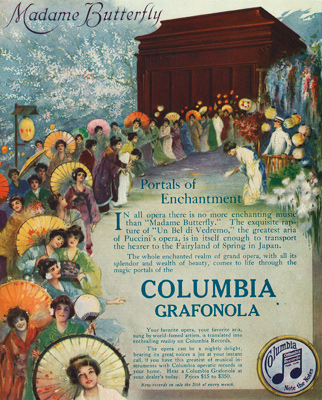 |
Phonograph advertisement fromThe New Country Lifemagazine, April 1917 |
|
These ideologically loaded acts and images could offer unalloyed stereotypes, proposed antidotes to such perceived moral threats as the tango, or hybrid novelty by also gesturing towards African American cultural forms. |
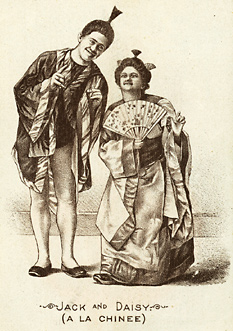 |
|
"Jack and Daisy (a la Chinee)" from Fitz & Webster publicity flyer, 1900 |
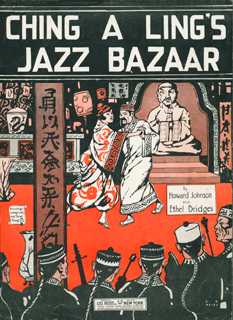 |
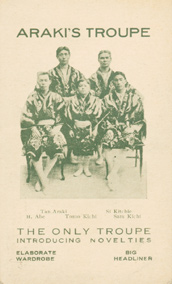 |
|
Tan Araki, Araki's Troupe business card, ca. 1915 |
|
|
L.S. Reiss, "Ching-a-Ling's Jazz Bazaar" sheet music cover, 1920 |
|
Along with 19th-century wood engravings and advertising trade cards, the exhibition's primary media included sheet music covers . . .
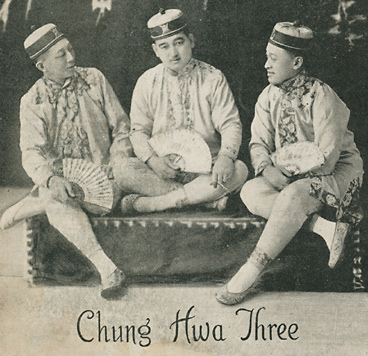 |
The Chung Hwa Three, from "Just a Girl That Men Forget" sheet music cover, 1923 |
|
. . . images of vaudeville, opera, dramatic stage, and silent cinema performers; photographs of amateurs in orientalist costume; stereo views and postcards; phonograph advertisements . . . |
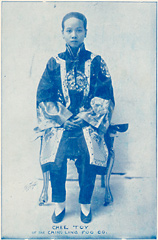 |
|
Chee Toy of the Ching Ling Foo Co., from "I Didn't Raise My Boy to Be a Soldier" sheet music cover, 1915 |
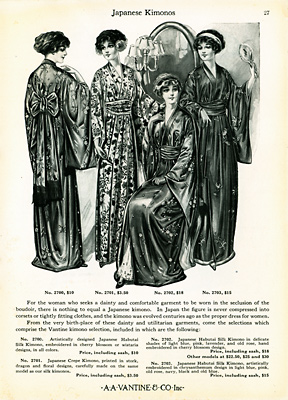 |
. . . other ephemera and domestic commodities; and later 20th-century record album covers and Hollywood promotional materials. |
|
Kimono page from Vantine's "House of the Orient" catalog, 1929 |
|
An exhibition brochure is available.
A gallery talk by Robert G. Lee (Associate Professor of American Civilization at Brown University; author of Orientals: Asian Americans in Popular Culture) and Mari Yoshihara (Associate Professor of American Studies at the University of Hawai'i at Manoa; author ofEmbracing the East: White Women and American Orientalism) took place on Wednesday 15 October at 7:00 p.m.
|
The gallery talk was co-sponsored by Wesleyan University's Davison Art Center, Freeman Asian/Asian American Initiative, Mansfield Freeman Center for East Asian Studies, Department of Art and Art History Samuel Silipo '85 Distinguished Visitor Fund,American Studies Program, English Department, Music Department,Theater Department, and Women's Studies Program. |
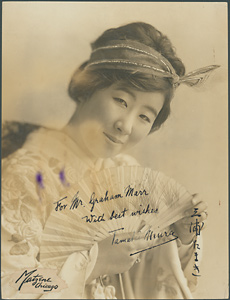 |
|
Matzene Studio, portrait of soprano Tamaki Miura, ca. 1915-17 |